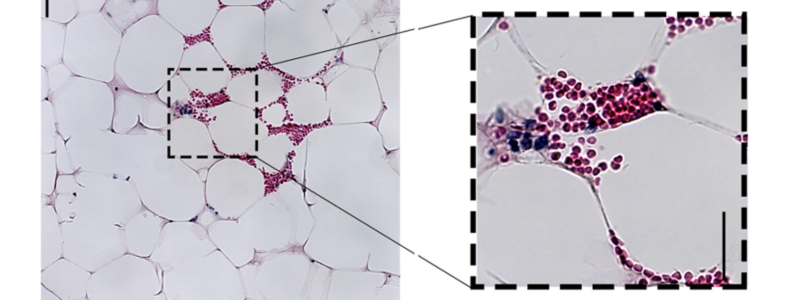Our Research
Immune Cell Development in Bone Marrow
We Discovered a Distinct Class of Stem Cells That Develop from Yellow Bone Marrow in Humans

In a study published on bioRxiv (September 2023), Dr. Nguyen identified that there are two different types of stem cell populations that are located within separate parts of bone marrow in the human leg. So far she has learned that stem cells derived from yellow/fatty marrow proliferate more and are more responsive. Currently she is asking additional questions in her lab to compare the marrow and immune cell development between people living with diabetes and those without diabetes.
NIDDK K08 Career Development Award to Investigate and Improve Non-Healing Wounds in People Living with Diabetes
Human Diabetic vs. Non-Diabetic Bone Marrow Niche

Approximately 30% of all people living with diabetes develop a foot wound resulting in a lower extremity amputation. Impairment in the innate immune system is a major driver of non-healing diabetic wounds, however, there is limited understanding of how and why diabetes affects the innate immune system.
The innate immune system is primarily derived from bone marrow hematopoietic stem cells (HSCs). To study the effect of diabetes on the development of human innate immunity, our lab, in collaboration with the Corvera lab, has developed a novel method to harvest and expand human HSCs and mesenchymal progenitor cells (MSCs) directly from bone marrow tissue explants collected from diabetic and non-diabetic donors who underwent lower extremity amputation. Utilizing this methodology, we plan to identify the mechanisms underlying diabetes-related impaired innate immune dysfunction that prevents wound healing, and to facilitate the discovery of novel therapeutics that may prevent amputations.
